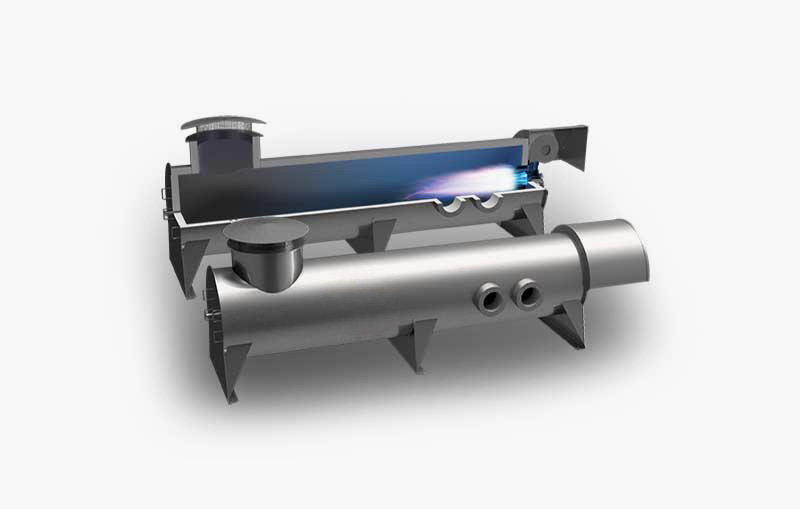Afterburners, also called thermal oxidisers, are devices used to minimise particulate pollution and to reduce odours caused by roasting. Whilst they decrease roasting machine emissions, they require additional gas to power them, and thus they can increase the roastery’s energy costs and carbon footprint. Afterburners require two or three times the amount of gas needed to power a roaster.
 Afterburners heat exhaust gases to temperatures above 600°C to break down smoke and volatile aromatic compounds
Afterburners heat exhaust gases to temperatures above 600°C to break down smoke and volatile aromatic compounds
An afterburner is positioned, as its name suggests, ‘after’ the ‘burner’, often on the roof of a building. Afterburners should be designed to be airflow-neutral. For various reasons, they can impede airflow — but that shouldn’t occur if they are installed and operating correctly.